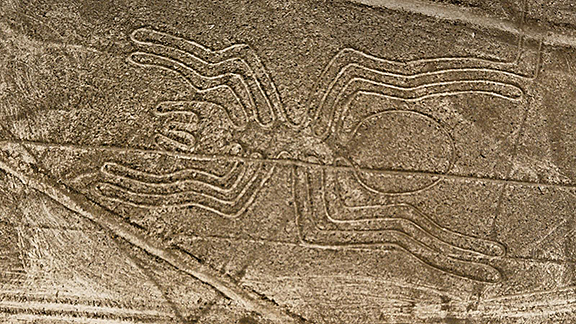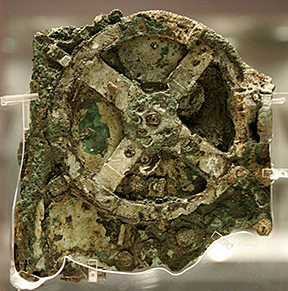Of UAPs, OOParts and The Unknown
When we were young, my sister became very fascinated by space travel and astronauts. She collected a scrapbook of stories about the men and the missions.  Had she been a child today she’d probably have had a wonderful time with Captain Kirk actually getting to go to space (well, technically I was the Captain Kirk fan!) on a Blue Origin (Jeff Bezos) rocket.
Had she been a child today she’d probably have had a wonderful time with Captain Kirk actually getting to go to space (well, technically I was the Captain Kirk fan!) on a Blue Origin (Jeff Bezos) rocket.
We both devoured the later discredited Erich Von Däniken’s Chariots of the Gods, which speculated on the many clues and objects that suggest Earth was visited many times by extraterrestrials, spawning stories of gods and giants and angels, flying ships and sudden advances in human culture. Though, as noted, he was discredited (partly for misbehavior of a very human kind), his book remains an interesting theoretical dive into how ancient people accomplished certain feats (like building pyramids and hybridizing plants) and described or drew/painted/sculpted images that certainly appear like technologies we now can identify.
Ufology (a study which may have to alter it’s name since the proper term, we are told, is UAP; a UFO is an “unidentified flying object,” whereas a UAP is an Unidentified Aerial Phenomenon) is the study of unidentified “things” that people spot in the sky, and includes such sightings, but also includes “close encounters,” such as those Von Däniken suggest may have altered the course of human history over many millenia.
These close encounters are reckoned based on terminology and a system of classification proposed by astronomer and UFO researcher J. Allen Hynek. You may have seen the TV series Project Blue Book, which is quite good, if you like that sort of thing, and features Hynek as a character. He listed six levels of encounters, three sightings, and three actual encounters.
They include:
- nocturnal lights (lights in the night sky – this writer and friends spent one summer stretched out on a nearby golf course every night watching for a bright object that sped into an overhead position, halted suddenly, threw out lights of various colors for a few minutes, then sped away, zero to something amazing in seconds);
- daylight discs (UFOs seen in the daytime with generally discoidal or oval shapes);
- radar-visual (UFO reports with radar confirmation);
- close encounters of the first kind (visual sightings of a UFO, approximately 500 feet away and observed in great detail);
- close encounters of the second kind (a UFO in which the physical effect is noted, such as a scorched earth, chemical traces, physiological effect);
- and close encounters of the third kind (UFO encounters that include some “animated entity,” such as a humanoid, robot, or other apparently living occupant).

With the recent release of radar and other footage from military and other pilots, military.com reports:
“(T)here has been a spike in UFO sightings across the nation. With the recent release of a US intelligence UFO report, are there just more people looking up in the sky or is it something else? 2020 produced 7,200 UFOs, an increase of over 1,000 from 2019. The US government and military confirmed investigations and sightings of UFOs bringing this phenomenon back into mainstream media.”
“(T)here has been a spike in UFO sightings across the nation. With the recent release of a US intelligence UFO report, are there just more people looking up in the sky or is it something else? 2020 produced 7,200 UFOs, an increase of over 1,000 from 2019. The US government and military confirmed investigations and sightings of UFOs bringing this phenomenon back into mainstream media.”
The “close encounters” have two unofficial additional categories, offered by un-official researchers: the fourth kind (a human is abducted by a UFO or its occupants – which some investigators should include a possible “transformed sense of reality,” which is to say it’s all in the witnesses’ heads); and the fifth kind (a direct communication between aliens and humans).
It’s this fifth kind that has garnered a great deal of speculation lately, given the admission by the military that yes, indeed, they have been tracking unidentified flying encounters, and archaeological and anthropological speculation that perhaps there have been times in the history of earth when neighbors from another planet dropped in to visit.

One piece of evidence for this is something called “OOParts” or “out of place artifacts.” This is an object of “historical, archaeological or paleontological interest found in an unusual context, which challenges conventional historical chronology by its presence in that context. Such artifacts may appear too advanced for the technology known to have existed at the time, or may suggest human presence at a time before humans were known to exist.” (Wikipedia) Or they may also indicate a “close encounter.”
One of the more famous OOPart is the Antikythera mechanism, a mechanical computer from the 2nd century BCE showing a previously unknown level of complexity.
As might be expected, some of these objects are simply mis-interpreted, have been buried in strata supposedly too deep for them to have existed by natural phenomenon, or are the object of wishful thinking, such as the “rust-proof” Iron Pillar of Delhi, which actually does have rust near its base, and thus can’t be shown to have properties far beyond its era’s capabilities to create.
Still, while researchers genuinely trying to investigate such phenomenon, and maintain their “mainstream” credibility in their science, have assured us that things like the Nasca Lines are simply cultural designs cut into the ground for ceremonial purposes, I can’t help but wonder why, when the pre-Columbian civilization supposedly responsible for them would have no concept of visualization from the air, yet the only way to really see what the designs are is from the air.
In general, however, OOParts are dismissed as one of the following:
Unusual artifacts (things that even skeptical researchers can’t entirely dismiss, such as the mentioned Antikythera mechanism, or the Maine penny, an 11th c. Norwegian coin found in a Native American midden);
Questionable interpretations (like the Baghdad Battery – a ceramic vase, copper tube and iron rod thought to be a galvanic cell but perhaps just a storage vessel for scrolls
– or the Dorchest Pot – a metal pot claimed to have been blasted out of solid rock but perhaps nothing more than a candlestick or pipe holder);
Alternative interpretations (like the Abydos helicopter – a carving in an ancient Egyptian temple thought to resemble a helicopter – or the Dendera lamps – supposed to show light bulbs as far back as Ptolemaic Egypt);

Natural objects mistaken for artifacts (the Aix-en-Provence petrified tools – probably tree remains – or the Baigong Pipes – the origins of which have been questioned)
Erroneously dated objects (the Coso artifact – really a 1920s spark plug – and the Malachite Man – thought to be early Cretaceous, but in fact post-Columbian)
Modern-day creations, forgeries and hoaxes (one of the more famous locally of course is the Cardiff Giant, a supposedly huge petrified man – and if you’ve seen it you can only wonder how anyone was ever fooled).
Given how many times people have both been oblivious to a technology or phenomenon right before their eyes, or have credited science with a truth that later turned out to be mistaken, a willingness to investigate with an open mind seems to be the best approach to the unknown.
And I, for one, can’t wait to find out what the “close encounters” of the recent kind really are.











